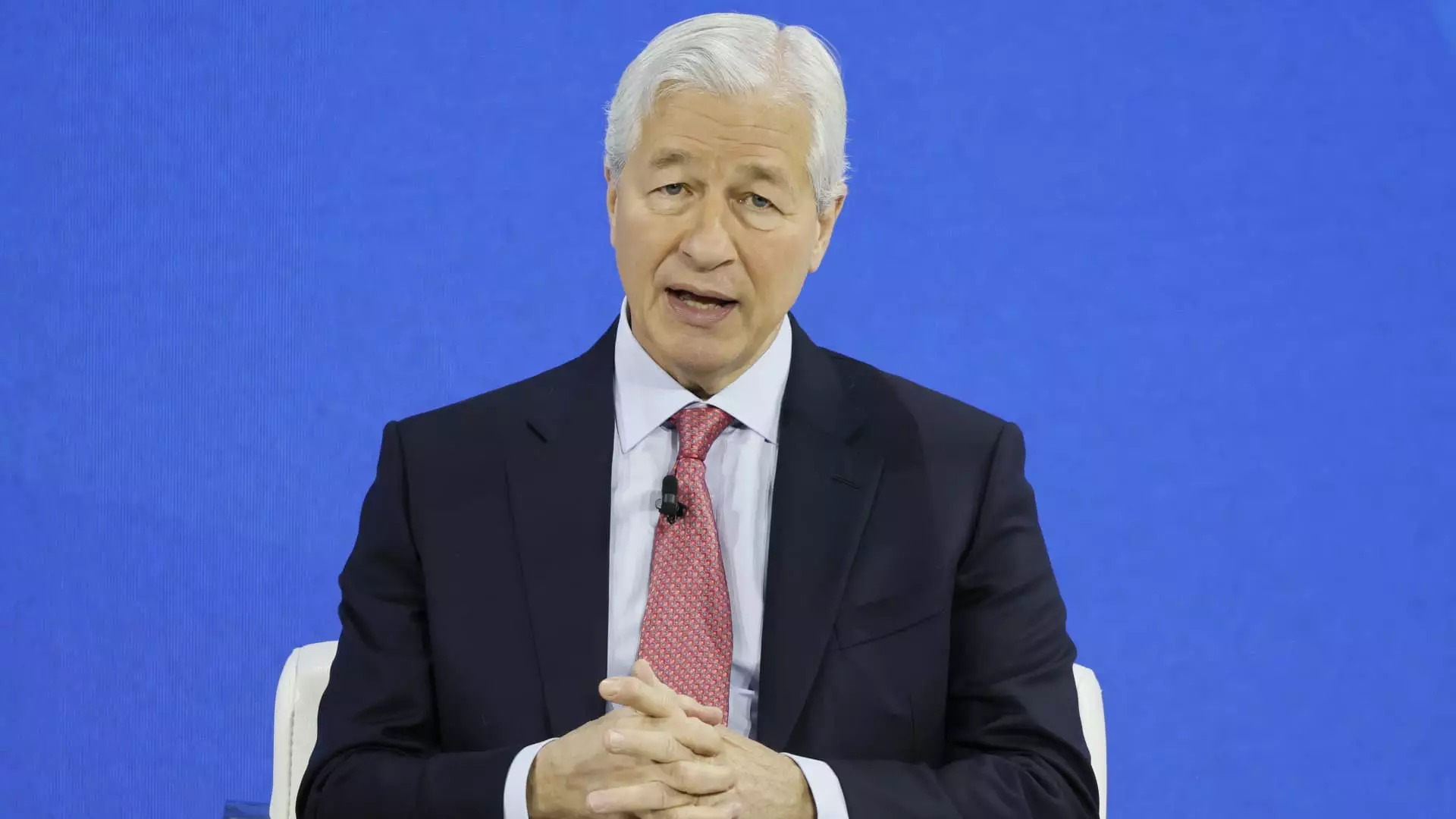JPMorgan Chase, the largest bank in the United States, recently released its third-quarter financial results, which provided a mixed bag of insights into its core operations and future outlook. While the earnings of $4.37 per share surpassed analysts’ expectations of $4.01, it’s essential to acknowledge that this represents a 2% decline compared to the same period last year. Revenue showed a more positive trend, climbing by 6% year-over-year to reach $43.32 billion, outperforming the forecast of $41.63 billion.
The increase in net interest income (NII), a crucial metric for banks, was noteworthy. The reported NII was $23.5 billion, exceeding the estimate of $22.73 billion. This rise was attributed to beneficial trends in securities investments and robust growth in the credit card sector. These figures, while impressive, prompt a deeper analysis of what lies beneath the surface of these results.
Jamie Dimon, the bank’s veteran CEO, took the opportunity to commend the third-quarter results. However, he sounded a cautious note, highlighting the “treacherous” geopolitical landscape and the increasingly stringent regulatory environment. Dimon’s statement raises pertinent questions regarding the balance between maintaining a resilient financial system and ensuring economic growth. He emphasized the need for regulators to reconsider existing rules that might have unintended consequences.
The call for a sift through regulatory frameworks showcases Dimon’s strategic foresight in anticipating the implications these rules could have on market health and economic vitality. His sentiments reflect a broader industry concern regarding the ability of banks to adapt without being constrained by excessive regulations, especially in a rapidly evolving financial landscape.
Despite tentative economic indicators, JPMorgan’s investment banking division saw a commendable rise in fees, increasing by 31% to $2.27 billion—well above the anticipated $2.02 billion. This reveals the bank’s capacity to capitalize on market opportunities, specifically in an environment where many firms struggle to maintain revenue streams.
Additionally, trading revenues stood out, with fixed income revenue remaining stable at $4.5 billion. Equity trading soared 27% to reach $2.6 billion, surpassing earlier forecasts. This performance underscores the bank’s ability to navigate a challenging market, suggesting that JPMorgan expands its competitive edge through diversified revenue sources.
However, the bank’s results were not without drawbacks. The provision for credit losses amounted to $3.1 billion, exceeding the $2.91 billion estimate. Moreover, with a concerning $2.1 billion in charge-offs and an increase in reserves for future losses, market participants may need to question the long-term health of JPMorgan’s asset quality.
CFO Jeremy Barnum reassured investors regarding consumer stability, asserting that the bank’s decision to increase reserves stemmed from its growth in credit card loans rather than a deterioration in consumer strength. This point reinforces the idea that JPMorgan is proactively managing potential risks while continuing to expand its lending operations.
Looking ahead, concerns loom regarding how JPMorgan will adapt to changing interest rate dynamics as the Federal Reserve begins to cut rates. Historical precedence indicates that banks may experience squeezed profit margins as the yields on loans decrease while funding costs remain stable or rise. In light of this, Barnum’s comment that the recent spike in NII could be merely a “blip” highlights the volatility and unpredictability inherent in the current economic climate.
Investors should also note that while JPMorgan’s stock has risen approximately 25% this year, its potential vulnerability in the upcoming rate environment necessitates a cautious approach. Market watchers will be keen to see how the firm manages this transition while maintaining its robust growth trajectory.
JPMorgan Chase’s third-quarter earnings reflect a robust financial foundation but also illuminate the complexities of navigating a shifting economic and regulatory landscape. With a blend of strong revenue growth in investment banking and rising net interest income, the bank is well-positioned. However, persistent challenges around credit losses and fluctuating interest rates serve as reminders that, despite its strong performance, the path forward requires careful navigation. Investors and stakeholders must remain vigilant as the bank continues adapting to changing financial conditions amid a backdrop of growing geopolitical risks.


Leave a Reply